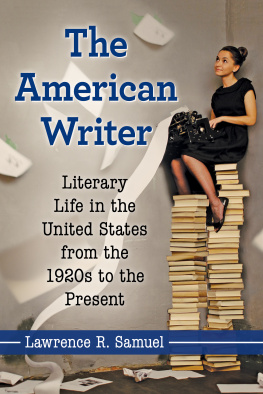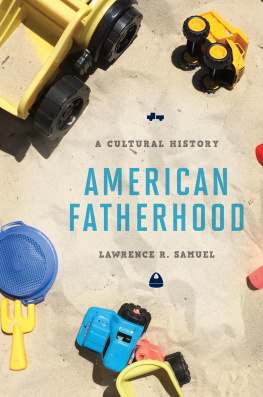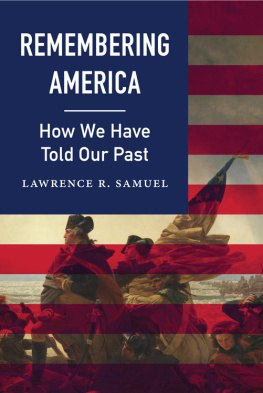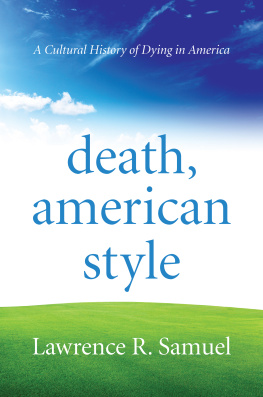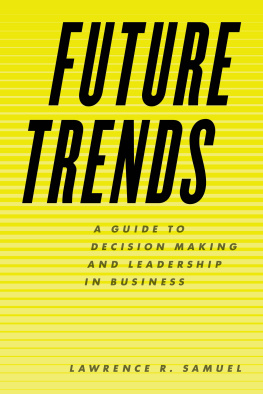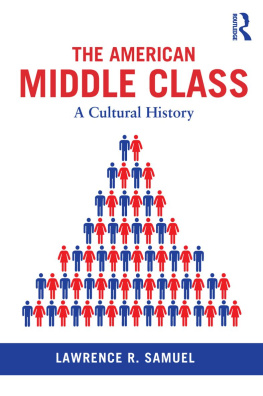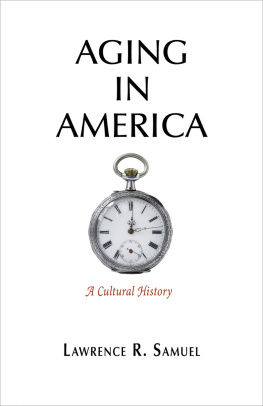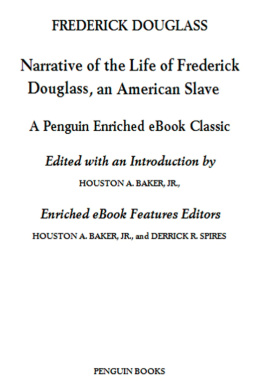
Also by LAWRENCE R. SAMUEL
AND FROM MCFARLAND
New York City 1964: A Cultural History (2014)
The American Writer
Literary Life in the United States from the 1920s to the Present
Lawrence R. Samuel

McFarland & Company, Inc., Publishers
Jefferson, North Carolina
LIBRARY OF CONGRESS CATALOGUING DATA ARE AVAILABLE
BRITISH LIBRARY CATALOGUING DATA ARE AVAILABLE
e-ISBN: 978-1-4766-2992-6
2018 Lawrence R. Samuel. All rights reserved
No part of this book may be reproduced or transmitted in any form or by any means, electronic or mechanical, including photocopying or recording, or by any information storage and retrieval system, without permission in writing from the publisher.
Front cover image 2018 iStock
McFarland & Company, Inc., Publishers
Box 611, Jefferson, North Carolina 28640
www.mcfarlandpub.com
Preface
As with many American writers, it all began innocently enough. Some twenty years ago, an editor for a scholarly press asked me if I would be interested in having my dissertation turned into a book. Sure, why not? I reckoned, especially with the $500 advance I was offered. Little did I know that seeing and holding the finished product a year or so later would spark a deep, unabated desire over the next two decades to be published. Already having a job of sorts, I had no intentions of being a part-time writer much less a full-time author, but some strange force pushed me to scribble down words whenever I had the chance. Books that did not exist, but that I believed should, had to be written, and, if no one else was going to do it, it had to be me. I quickly deduced that writing two clean pages a day, day in and day out, would give me a manuscript in six months, making consistency at least as important as inspiration. My scribblings soon evolved into a mission; having no kids at the time, leaving a robust body of work after I was gone would be my legacy, i.e., a literal paper trail that would ensure a kind of immortality.
Twenty books later, I felt the need to put my personal literary experience into some context by knowing more about the careers and lives of American writers who came before me. It quickly became apparent while doing research that I was hardly the only person to suffer from the writing bug and thus I was further spurred to diagnose the causes of this virulent condition. Being a cultural historian by trade, I felt that examining the role of writers within American society over the past century seemed to make the most sense in terms of approach. Such an exercise would not only help other writers come to terms with their own creative impulses, but add to their understanding of literary culture in this countrysomething useful in itself. Besides all that, writing about writing seemed like a fun thing to do and a way, perhaps, to improve my own craft.
The irony that no book fully dedicated to exploring literary life in the United States over the course of the last century has been published has not been overlooked. As our primary storytellers, writers deserve a full telling of their own storyone that goes beyond the more encyclopedic, anthological literary histories usually found on reference bookshelves. The book argues that those who have used language as their creative medium have held a unique and special place in our collective imagination, making the writer a fascinating character in the real-life American narrative. Part of my goal here is to show that taking on the responsibility to either document the past, present, or future of society or to create stories that reveal who we are as a people has been a weighty one. This proposition is intended to give writers the long overdue credit they deserve.
Still, this work shows that the American writeractual or imaginary, famous or not-at-all famoushas often been situated on the margins of society as an outsider looking in. More observers than participants, writers are typically peripheral to the main action, i.e., they are the narrator of a story rather than the protagonist. While there is some romance and glamour attached to the profession, writers have also been commonly depicted as tortured souls or as hacks barely scraping by (consider Joe Gillis, William Holdens character, in the 1950 film Sunset Blvd.). Pecking away in an attempt (usually, a vain one) to produce the Great American Novel or its cinematic equivalent (think Barton Fink) is another literary or cinematic clich that is grounded in considerable truth. Print journalists, meanwhile, have frequently been assigned the role in uncovering the truth in some sort of cover-up or conspiracy, again casting the writer as a kind of lone wolf working against the system. From Nick Carraway to the millions of bloggers today, writers are generally perceived as intellectual artists documenting an aspect of the human conditiona representation that warrants fuller exploration.
Although this book focuses on writers, it is of course impossible to ignore the work they produced. The American Writer locates individuals within the creative climate in which they operated, making the work also, at some level, a history of American literature and the publishing business since the 1920s. Agents, editors, and readerseach obviously playing an important role in the careers and lives of writersare thus also main characters in the story. I try not to make much of a distinction between high and low forms of writing, seeing both serious literature and popular entertainment as essential pieces of the story. And while the social divisions of race, gender, and class have obviously been important factors and are addressed in the book, I devote more attention to the American writing community at large versus hyphenated writers, e.g., gay, Jewish, black, or female. The most compelling stories are those that illustrate what we have in common and those to which we all can relate.
The American Writer begins with the end of World War I and continues to the present day. Literary life in the United States entered an entirely new orbit in the 1920s that, in many ways, endures to this dayhence those chronological boundaries. Regarding sources, the spine of the book relies on contemporary trade and popular magazines and newspapers, as well as scholarly references. Hundreds of different sourcesmany of them forgottendraw from journalists writing of the first draft of history. Professional writers penned much of the source material themselves, lending a direct, first-hand account of the story. Books and journal articles are used to frame the story, provide valuable context, and locate the work within mainstream scholarship. Literary life has of course played a recurring role in books, movies, and television and these too serve as prime fodder for the work. Typically overshadowed by his or her work, the American writer is brought into the light, something that is in itself a worthy pursuit.
Introduction
American writers, at least those of us who are fortunate enough to support ourselves in the field, are by and large a lucky lot.
Bryan Burrough
American writers like Burrough are indeed a lucky lot. Making a decent living by putting words down on paper is a rare privilege, and one that millions of people have tried to achieve. For at least the past century, Americans of every stripe have devoted much of their lives to becoming professional writers. Why this is so? What makes writing such a compelling dream for so many people to chase? By investigating literary life in the United States over the last hundred years or so, we begin to answer this and many other questions related to the peculiar art of writing, while also increasing our understanding of the role of creativity in American culture.
Next page
